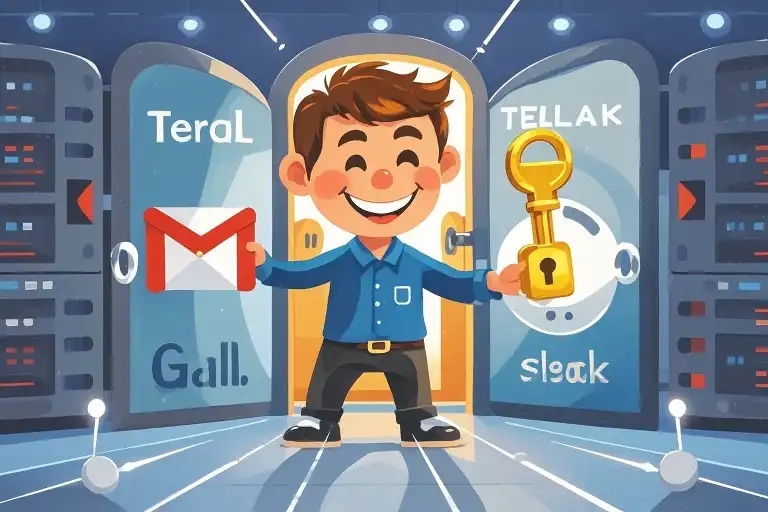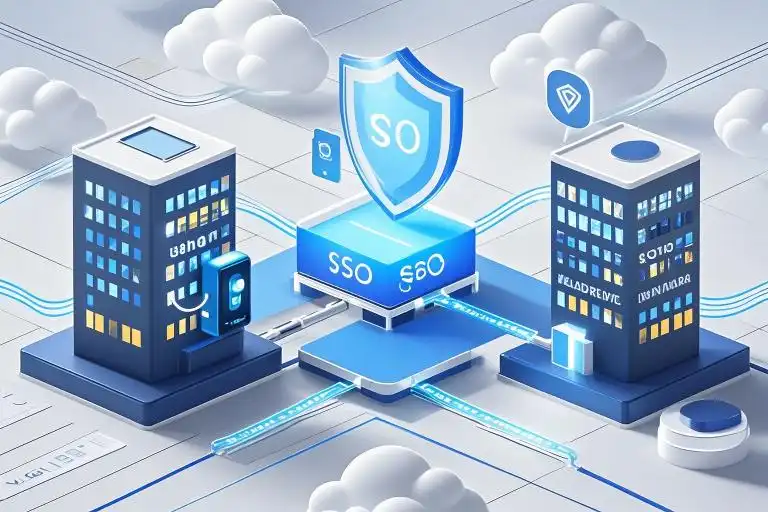Did you know? The average professional enters passwords into 11 different systems daily[^1], wasting a full 4 working hours each month[^2] memorizing weak passwords like “Password123!”. Last week, while helping a healthcare group deploy their SSO system, their IT director exclaimed: “It’s like installing iris-scanning security gates for our entire electronic medical records system!”
This is the magic of modern Single Sign-On (SSO) technology—it remembers all your keys like a concierge while safeguarding your digital identity like a Swiss bank vault. Let’s pull back the technical curtain to reveal how this “one login, universal access” miracle works.
Part 1: The Password Killer: SSO Through the Ages
Remember manually syncing Outlook contacts in 1998? Microsoft’s Active Directory (AD) emerged as the digital census system, letting enterprises manage all accounts centrally for the first time. My mentor once said: “AD is SSO’s great-grandfather—it taught computers how to establish trust relationships.”
[^1]: Gartner 2023 Digital Productivity Report
[^2]: LastPass Annual Password Fatigue Study
Technology Evolution Timeline
| Era | Tech Star | User Pain Solution |
|---|---|---|
| 1990s | LDAP Directory | Centralized employee data |
| 2000s | Enterprise AD | Internal single authentication |
| 2010s | Cloud-Native SSO | Cross-domain secure access |
| 2020s | Biometric SSO | Passwordless experience |
Part 2: The SSO Trio: Players in the Security Symphony
Imagine entering a smart office building:
- Security Turnstile (Identity Provider)
- Google Authenticator/Microsoft Azure AD
- “Please present your digital ID”
- Private Office (Service Provider)
- Your Salesforce/Slack/Confluence
- “Visitor verified, access granted”
- Secure Corridor (SSO Server)
- Transmitting encrypted SAML tokens
- “Passport traveling through quantum tunnel”
🔐 Pro Tip: Next login, watch your address bar—that fleeting “accounts.google.com” redirect is your IdP at work!
Part 3: SSO in Action: Google × Trello Case Study
A real deployment from last week:
- Click Trello’s “Sign in with Google”
- Browser performs “security redirect waltz”
- Complete 2FA at Google’s verification hall
- Return to Trello with encrypted JWT token
- Board interface loads instantly like facial-recognition subway gates
“Easier than remembering ‘Marketing2024!’,” Marketing Director Sarah laughed. “No more interns taping passwords to monitors!”
Part 4: SSO’s Shield and Spear: Dual-Layer Protection
SSO isn’t a silver bullet, but with these it becomes a digital fortress:
- 🛡️ MFA Combo: Biometrics + hardware keys
- 🌐 Zero Trust Patrol: Continuous device verification
- 🔄 Token Refresh: Dynamic credential updates
Cybersecurity expert Bruce Schneier notes: “Good authentication should be like an onion—layered protection without making users cry.”
Part 5: The Future: When SSO Meets AI Assistants
Most exciting finds from tech conferences:
- 👁️ Iris Ballet: Blink-and-authenticate biometrics
- 🤖 AI Sentry: ML-powered anomaly detection
- 🧬 Behavioral DNA: Identity confirmation via typing patterns
Latest healthcare trial: Nurses tap devices with smart rings to instantly access all care systems—true “frictionless security.”
Conclusion: The Right Way to Unlock the Digital World
Next time you click “Continue with Google,” smile—you’re witnessing 30 years of tech evolution. SSO is your digital master key, but unlike physical keys: when lost, the real security system springs to action.
“Technology should be like oxygen,” cloud pioneer Marc Benioff reminds us: “Ubiquitous yet invisible.” SSO quietly transforms how we interact with the digital realm.
Your turn: What SSO detail will you notice next login? Share your “aha moment” below!



